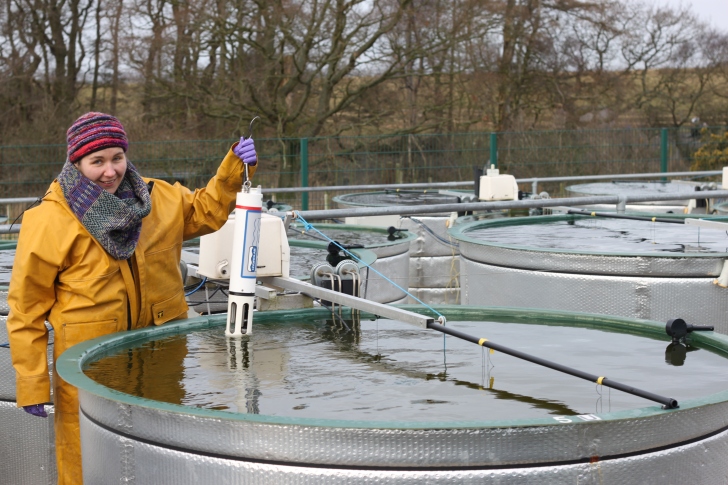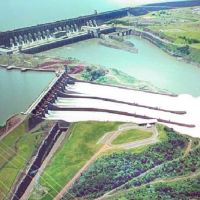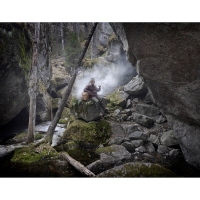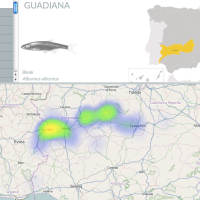MARS Lake Experiments in the UK

MARS mesocosm experiments: Jessica Richardson using a cyanotorch to measure algae and cyanobacteria biomass. Image: Heidrun Feuchtmayr
Last year we profiled the MARS river experiments across Europe, investigating the potential effects of multiple stressors on freshwater ecosystems. Today we begin a new series of posts profiling the project’s lake experiments, beginning with the UK study.
Located close to Lancaster in the North West of England, the lake experiments are led by MARS scientist Heidrun Feuchtmayr from the Centre for Hydrology and Ecology. The experiments are designed to investigate the interactions between extremes in rainfall and nutrient loading at different temperatures. This work will allow predictions to made as to how the ecological health and functioning of shallow lakes in Europe may be affected by changes in rainfall and temperature in the future under projected climate change. Ecological health and functioning depends on factors such as the biodiversity and structure of aquatic communities, ecosystem metabolism and resilience.
Experimental systems known as mesocosms are used in study to recreate variables from the natural environment within controlled, observable conditions. In other words, mesocosms create an ‘ecosystem in minature’, bridging the gap between laboratory work and field studies. The CEH mesocosms are one metre high fibreglass cylinders filled with water which can be artificially heated and mixed.
At the start of the MARS experiments, the tanks are set up with similar starting conditions: the sediment is a mix of sediment from Windermere mixed with sand. The sediment is cross-mixed between all mesocosms before the water is added. The water is a mix of Windermere water and rain water and so already contains algae. Zooplankton is collected with nets from Windermere and added to the tanks. Macroinvertebrates are collected from Windermere and added to the tanks. However, before the experiment starts, the water and sediment is again cross-mixed several times to ensure similar starting conditions for all tanks. Fish are collected from some local streams and sexed. Two males and two females are then introduced to each mesocosm at the start of the experiments.
In the MARS experiments, two temperature regimes (ambient temperature; and +4°C) and two nutrient treatments (no additional nutrients; nitrate and phosphate addition) will be applied to 32 mesocosms equipped with computer controlled heating devices. Extreme rainfall will be simulated in half the mesocosms once each season, by adding and physically mixing the water in the mesocosms.

Monitoring the mesocosms: using a datasonde to measure temperature, pH, conductivity and algae biomass. Image: Heidrun Feuchtmayr
Sensors in the mesocosms constantly measure water temperature, dissolved oxygen and solar radiation, whilst a weather station is used to monitor air temperature, rainfall, wind speed and direction. Analyses of the biological development of each mesocosm are taken in a variety of different ways: bacteria is analysed using molecular methods, phytoplankton through analysis of chlorophyll a levels, and the presence of zooplankton, aquatic plants and fish is also monitored. These analyses are carried out in tandem with chemical analyses to help capture the full impacts of stressor combinations and ecosystem recovery following pulses of extreme rainfall conditions.
The MARS mesocosm experiments are ongoing, and we will share their results with you as they arrive. You can read our archive of reports on the MARS river experiments here.















